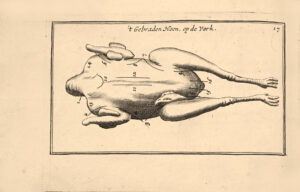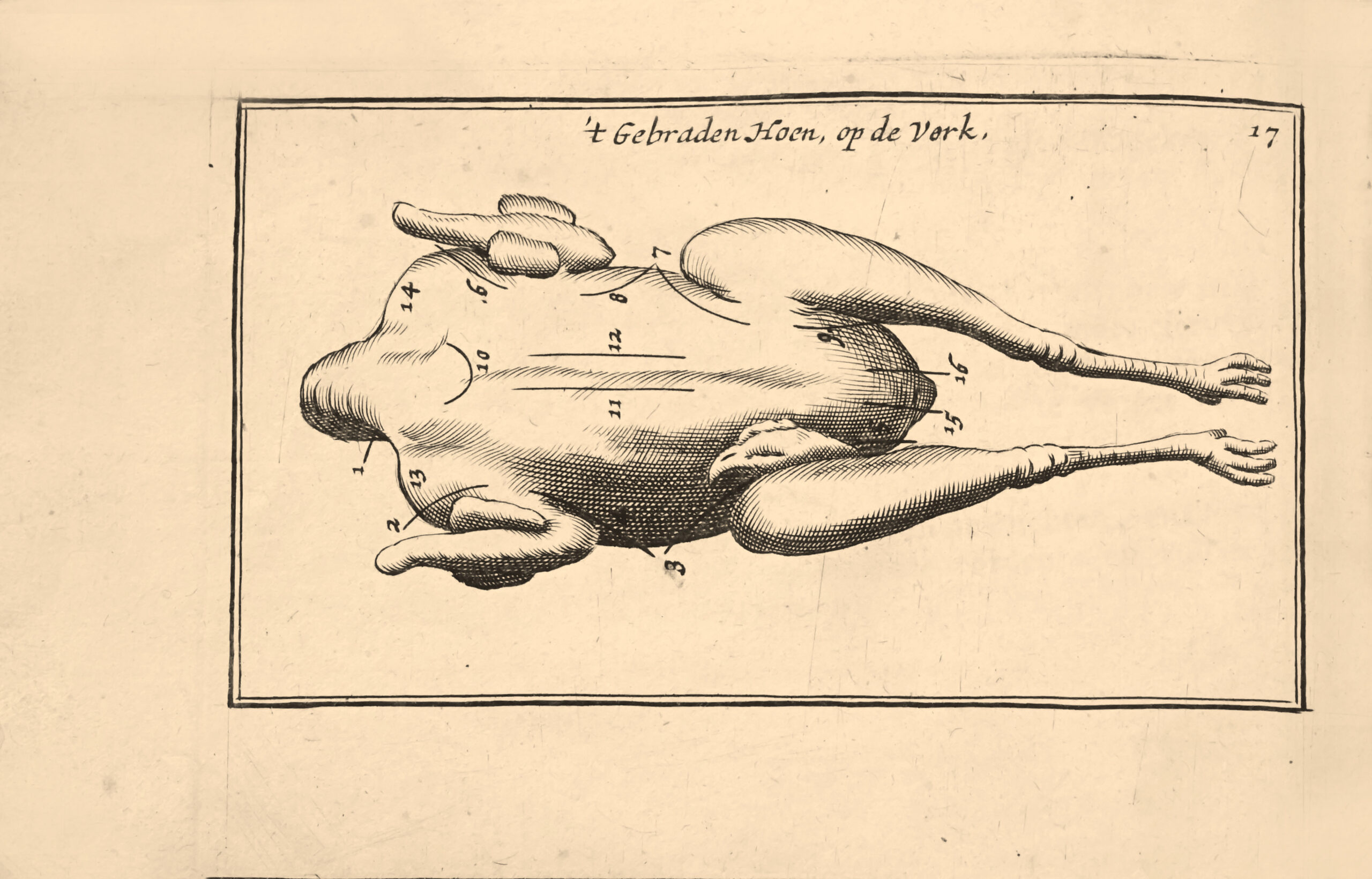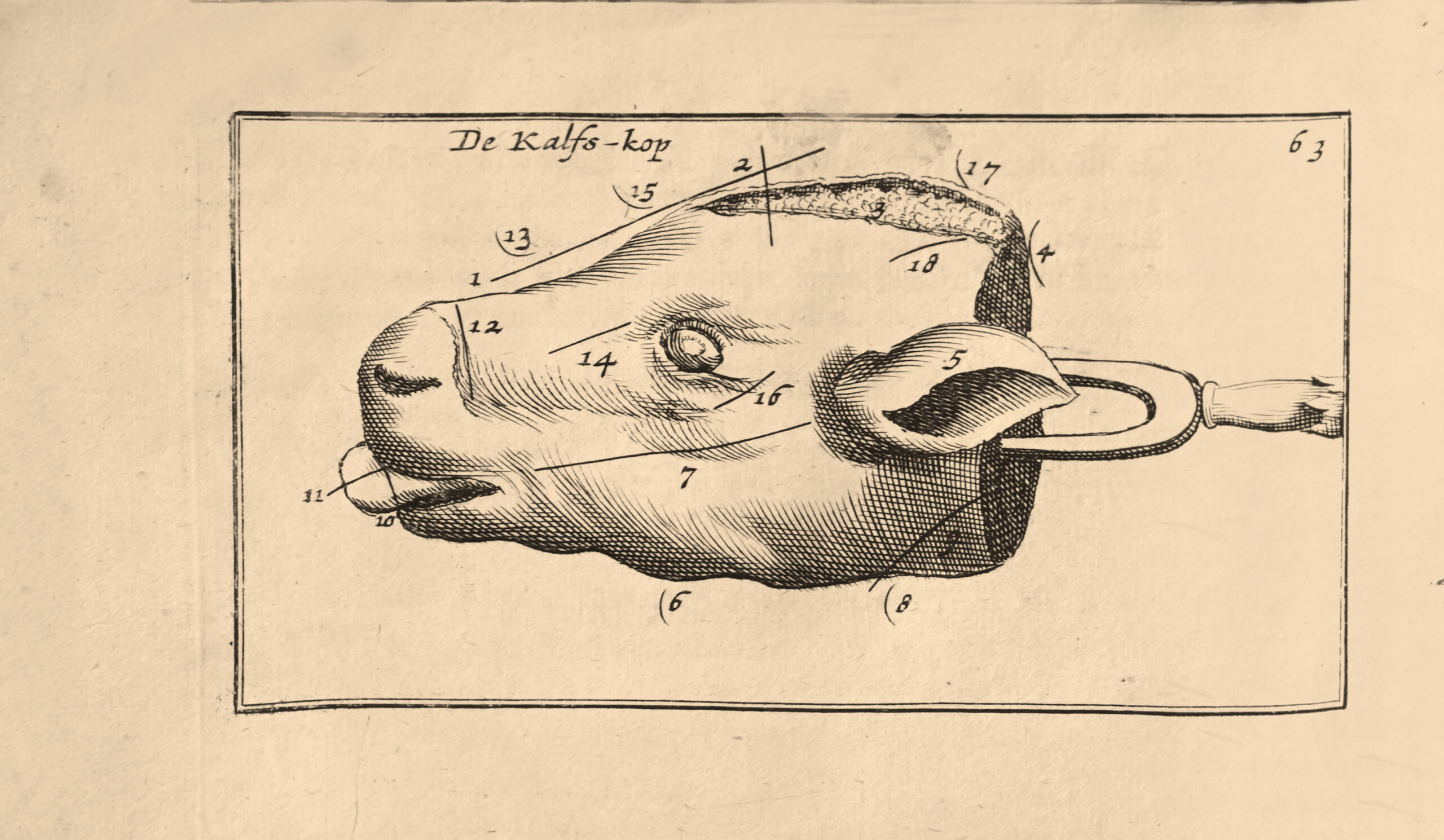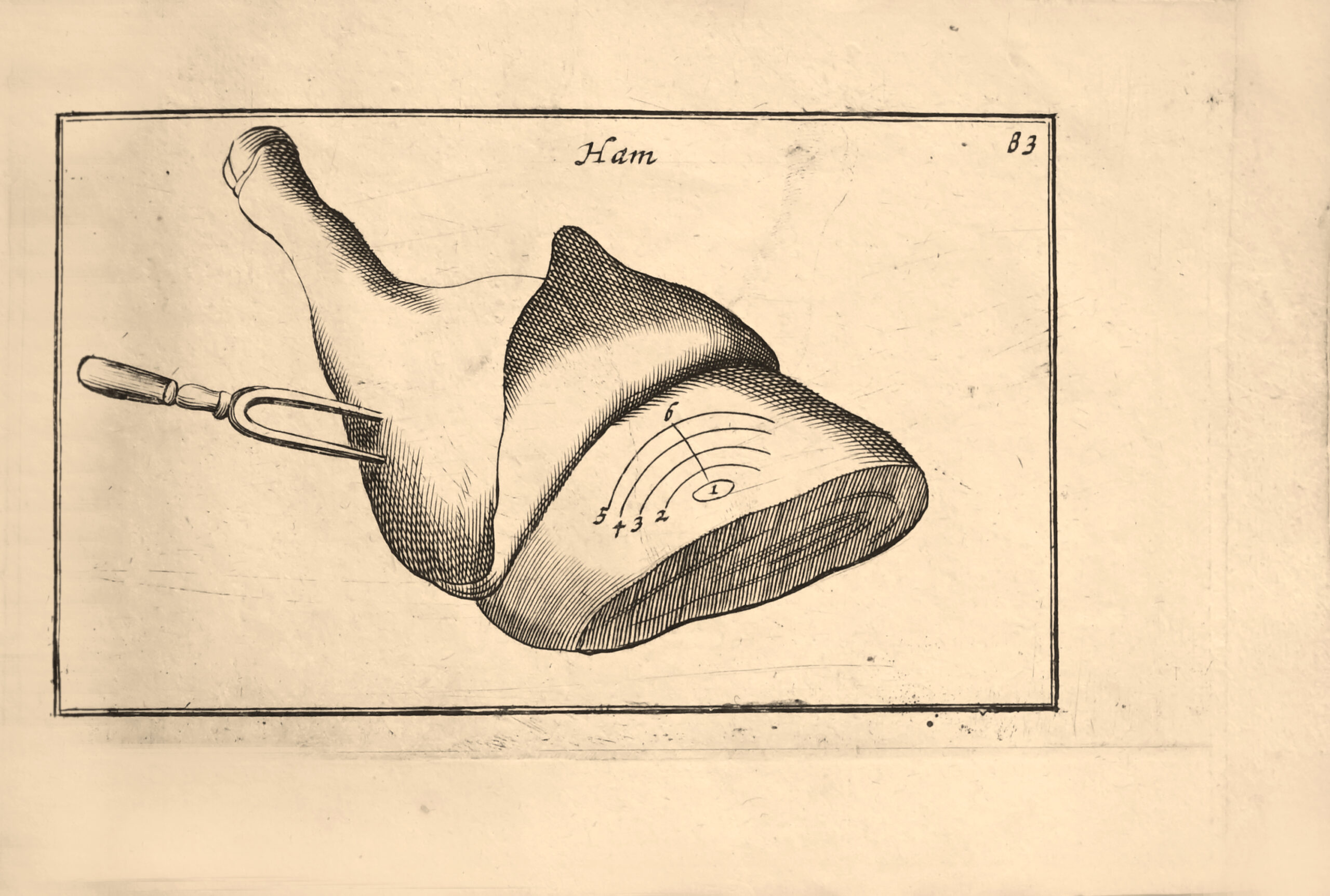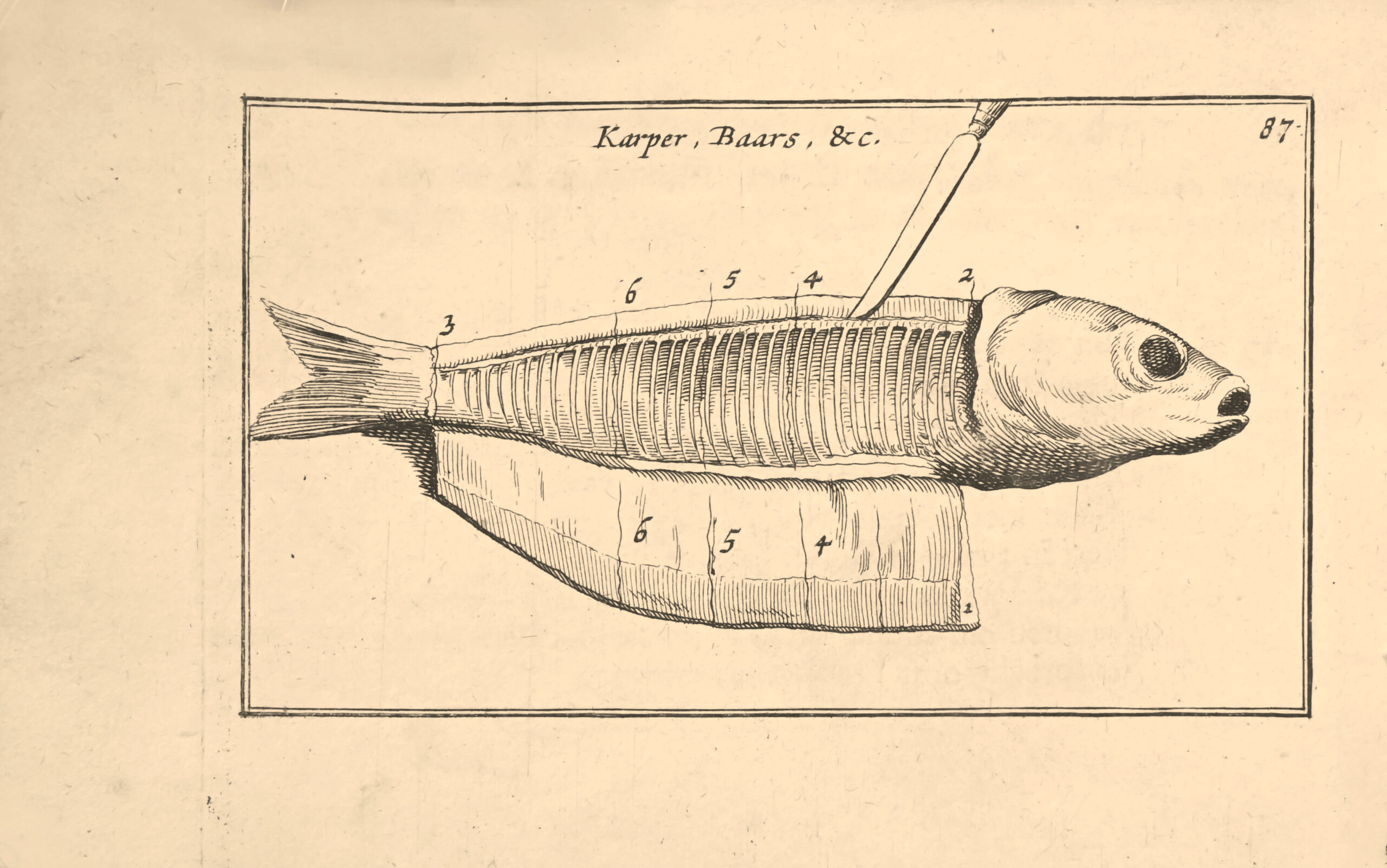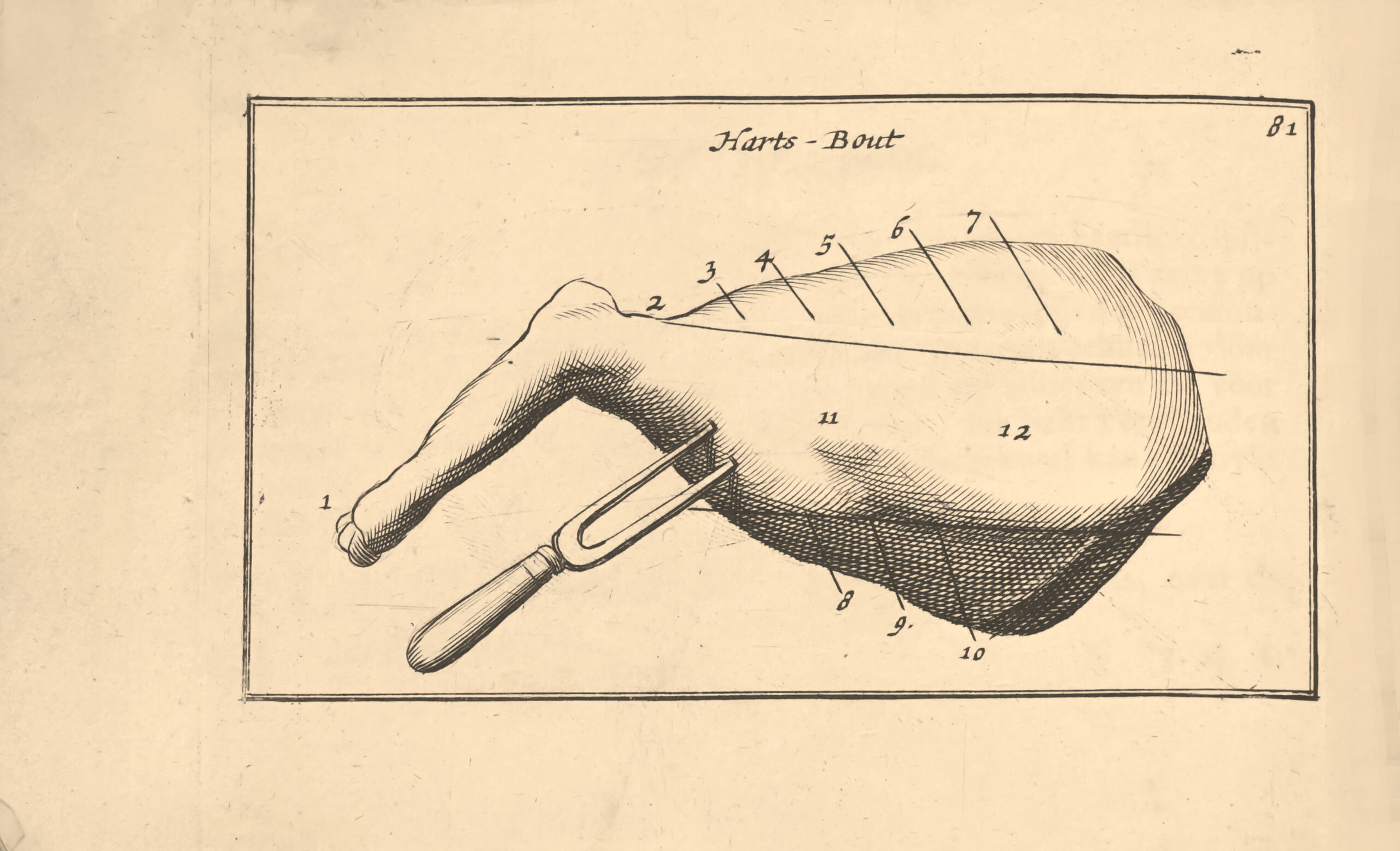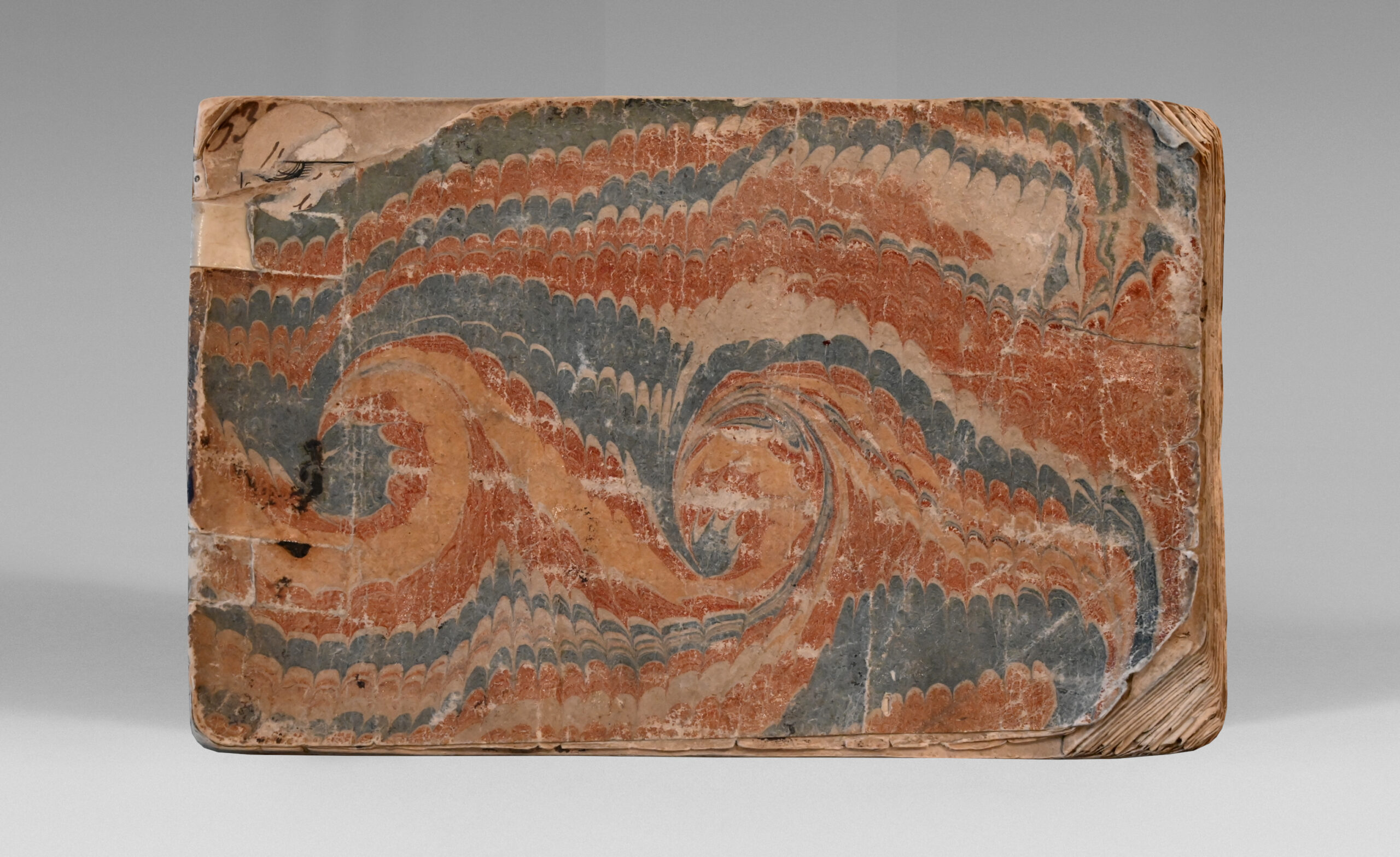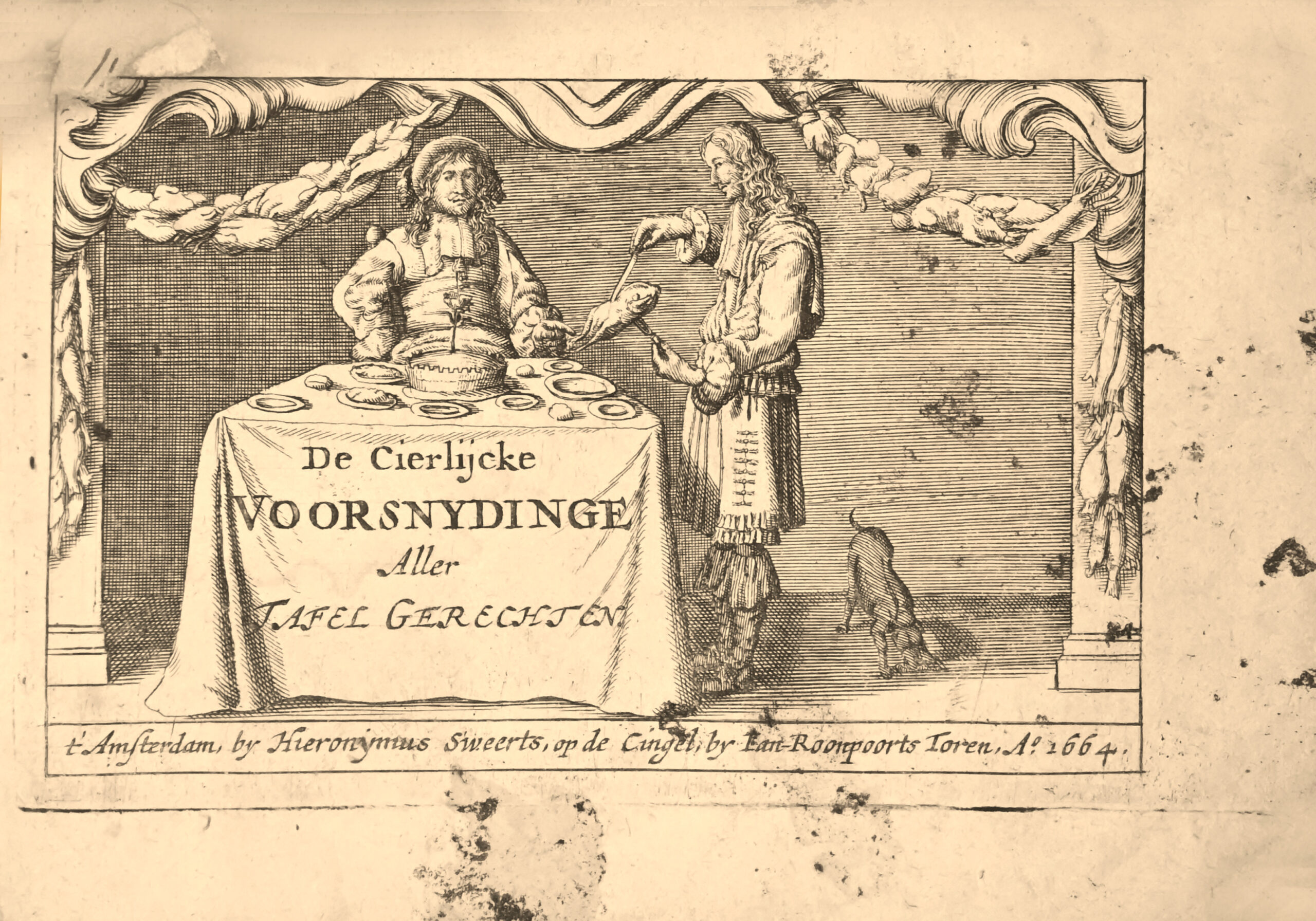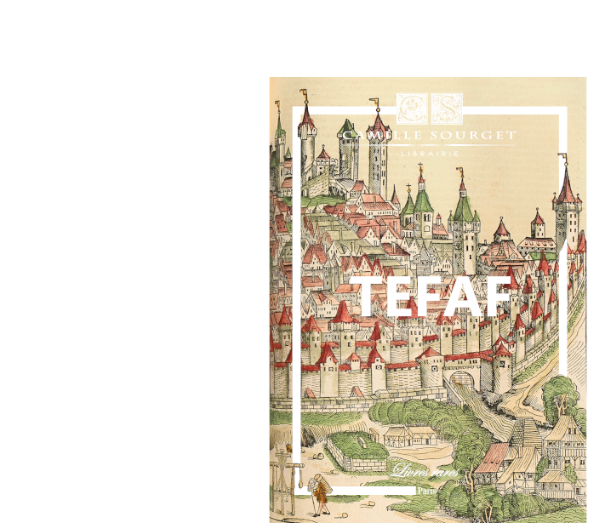Amsterdam, Hieronymus Sweerts, 1664.
Oblong 12mo with : 1 engraved frontispiece, 96 pages, 31 copper-engraved plates out of text (as often without the folding plate), few stains on the frontispiece. Preserved in its late 17th century wrappers, small loss to upper left corner of front cover.
101 x 154 mm.
Rare first edition of the first book to têch the Dutch aristocracy the arts of the table and the practice of the cutting squire.
Witteveen & Cuperus 6510; Waller 1790; Vicaire, 870-871; Bitting, 530; Cagle, 1080; 116 Uncommon Books on Food and Drink, 33; Landwehr, no. 17.
“The book’s aim is similar to that of ‘L’Art de Trancher la Viande’ in Jacques Vontet’s handwritten manual from the first half of the seventeenth century, itself inspired by Mathia Giegher’s ‘Trinciante’ of 1639, but differs both in its subject matter and trêtment, and in its iconography.
The chisel-engraved illustration fêtures 32 figures têching how to carve poultry, game, mêt, fish, ham, lobster, even artichokes, pies and cakes; unlike its predecessors, it does not fêture a fruit plate. The frontispiece shows a lord in front of a garnished table; standing beside him, a squire cuts up a fowl; to the right, a dog pounces on reliefs; the title is inscribed on the front edge of the tablecloth.” (Pierre Berès, catalog 82, Nourritures).
A copy from the first issue, whose preface has not yet been signed with the initials of the author, a book and picture dêler.
Hieronymus Sweerts (1629-1696), bookseller, engraver and poet, testifies in his preface that it was out of emulation that he wanted to give his compatriots this trêtise, following the example of those used by the Italians, Germans and French. In fact, the sequence of plates, which he undoubtedly engraved himself, is taken from Matthias Giegher’s famous Il Trinciante (Padua, 1621), a living source of all Europên slicing art of the 17th and 18th centuries. He announces the publication of a second part, devoted to the art of slicing fruit, which has never seen the light of day. He prides himself on showing how to slice on the plate and without a fork, which he claims has never been done before.
“The frontispiece depicts a lord at table: standing next to him is a squire-tranchant cutting up a fowl with the end of a fork. On the tablecloth, we rêd: ‘De Cierlijcke Voorsnydinge Aller Tafel Gerechten’ and below, on a single line: ‘t’Amsterdam by Hieronymus Sveerts, Bock…’.
It should be noted that in some editions of La Varenne’s ‘Cuisinier français’, notably that of Amsterdam, Pierre Brunel, 1712, the frontispiece is analogous without being quite similar.”
(Vicaire, Bibliographie gastronomique, 870-871)
The art of slicing illustrated with 31 copper-engravings. The out-of-text suite is preceded by a remarkable frontispiece depicting a set table where the master of the house admires the dexterity of his chef, slicing a fowl in alto.
It shows hen, turkey, phêsant, duck, goose, boar’s hêd, calf’s hêd, lamb’s haunch, ham, lobster, perch, pike, artichoke, pie and pate en croûte, among others.
After the preface, the author explains the exact nature of the different knives to be cut. He then urges the catering officer not to lash out like a fencer, but to work calmly and above all with well-washed hands and, above all, not to lick his fingers.
In 96 pages, 49 examples are described and illustrated with highly instructive copper engravings. Poultry, game, pork, fish and pastries are all subjected to the pre-cutting knife.
OCLC lists 5 copies in Public Institutions in the Netherlands and one in the British Library; copies mistakenly dated 1660 are reprints after 1668. The same applies to the Marcus Crahan copy, presented as the original edition.
A precious copy of this rare work on the art of slicing, particularly wide-margined.
Provenance: from the library of the Vicomte de Cossette with his heraldic ex-libris.
